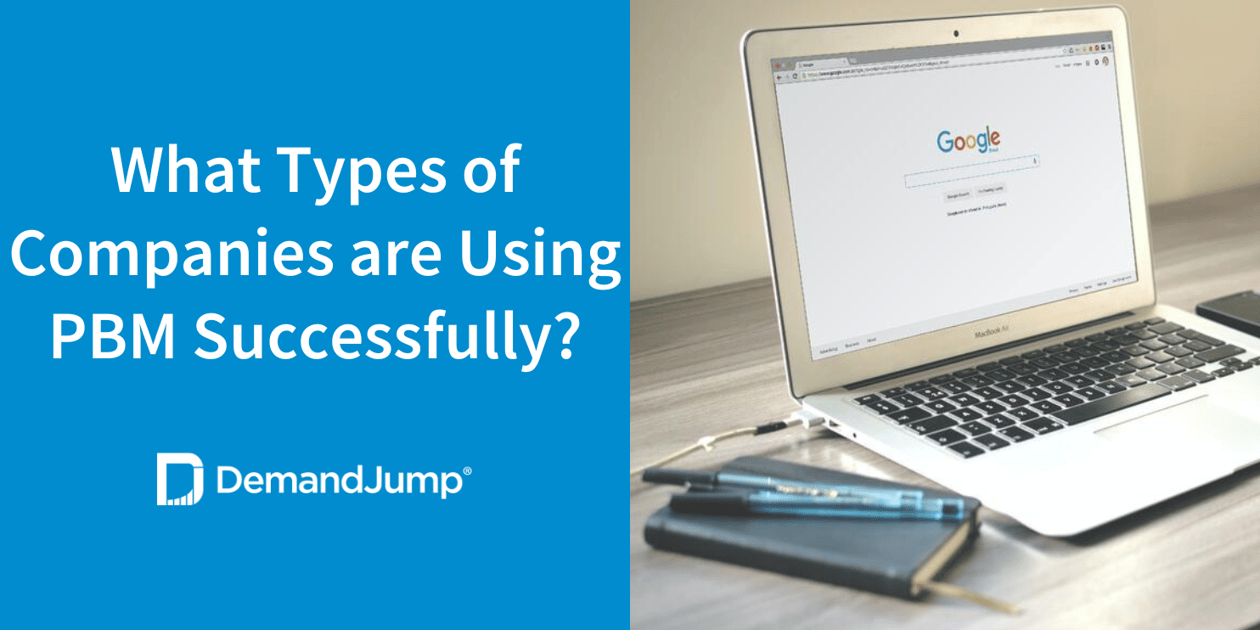What Types of Companies are Using PBM Successfully?
June 14, 2022 •Shannon Elward

Marketers have a lot on their plates. There’s running paid ads, monitoring and posting on social media, building out email campaigns, developing organic content, increasing the number of marketing qualified leads, and optimizing website content… and that doesn’t even begin to tell the full story.
Fortunately, tools and methodologies have become better and smarter over the past few years, giving marketers what they need to do their jobs more effectively and efficiently. One such methodology is pillar-based marketing, or PBM. A pillar-based marketing strategy can help teams increase leads, conversions, and company revenue without increasing their advertising spend. But what is PBM, what makes a PBM campaign successful and what companies use pillar-based marketing successfully? Let’s dive into the specifics.
What Is a PBM Strategy?
Pillar-based marketing is similar to other marketing philosophies you’ve likely heard of, like account-based marketing (ABM) in that it’s fundamentally a growth strategy. However, while ABM focuses its efforts on a set of target leads, pillar-based marketing is designed to increase the amount of qualified leads or customers a company receives by casting a wider net. This is accomplished by aligning your content marketing efforts—including data-driven keyword research and pillar topics—with the exact information your target audience is looking for.
How Do You Measure the Success of a PBM Campaign?
The biggest and most important measure of success in any PBM campaign is increasing your page one results on Google and other search engines. Why? Almost 91% of web content gets no traffic. No traffic means no leads, no conversions, and no revenue.
The sites that do get traffic illustrate that how well you rank on Google means everything. The 10th organic search result has a dismal 2.5% click-through rate. The first organic result on Google, though? It has a 28.5% click-through rate. In other words, if you’re the first non-ad result on Google you’re getting a lot more traffic than anyone else from your organic content, which means pulling leads and customers from your competitors.
Are there other PBM goals in addition to better rankings? Of course. Time after time, our DemandJump customers who use PBM to the fullest extent see results such as:

Who Should Use PBM?
Everyone. Ok, maybe not everyone. But the truth is that pillar-based marketing works for companies of all shapes and sizes. Are you B2B or B2C? PBM can work for you. Are you in manufacturing, financial services, consulting, ecommerce, healthcare, SaaS, or any other industry where you’re trying to reach a target audience? Pillar-based marketing is the way to go.
Here are just a few examples of PBM campaigns that illustrate just how powerful PBM can really be.
- Collective[i]: As a B2B SaaS company that provides digital services to sales teams, they wanted to capture a larger market share in the sales forecasting space, drive traffic, and increase revenue. By publishing two pieces of pillar-based content per week for just three months, they went from zero to 305 first-page rankings.
- Life Settlement Advisors: A life settlement company, they wanted to increase their market share and drive traffic around the topic of selling life insurance. By publishing two pieces of content per week for just six weeks, they increased their first-page rankings from 46 to 119.
- Swan Global Investments: As a financial services company, they were looking to take the hedged equity market share on Google. By publishing just one piece of content per week for one month, they went from 3 to 32 first-page rankings.
- Zauderer Associates, Inc.: As a manufacturers' representative agency, they aimed to increase their market share in the medical wire rope area. By publishing one piece of content per week, they won the number one organic spot for “medical wire rope” and increased their first-page rankings from two to 10 in just four months.
What do all these PBM use cases have in common? By using a pillar-based marketing strategy, they successfully increased their first-page rankings on Google and other search engines, increased their market share in their space, drove more traffic to their sites, and increased their overall revenue. Learn more about other companies— including our own team at DemandJump—that are finding great success with pillar-based marketing on our website.
DemandJump: The First and Only Pillar-Based Marketing Platform
At DemandJump, we’re on a mission to help our customers increase their first-page rankings on search engines and drive better business outcomes. Our platform was built for marketers, by marketers, as a direct response to the constantly changing target that is content marketing and SEO.

As the first pillar-based marketing platform on the market, we’re helping our customers increase their rankings, drive engaged traffic, and increase their revenue—all without increasing their ad spend. In fact, our customers see an average ROI of 229% after just 60 days! Ready to learn more about what DemandJump and pillar-based marketing can do for you?
Featured Articles
Categories
- Attribution Tracking (13)
- Channel Optimization (11)
- Consumer Insights (68)
- Content Marketing (251)
- Data Science (8)
- Digital Marketing (6)
- Digital Transformation (26)
- Enterprise (10)
- Lead Generation (14)
- Market Intelligence (8)
- Marketing Analytics (39)
- Marketing Attribution (57)
- Marketing Management (153)
- Marketing Operations (86)
- Organic Search (222)
- Paid Search (52)
- Pillar-Based Marketing (63)
- Programmatic Advertising (9)
- SaaS Content (14)
- SaaS Marketing (29)
- Search Marketing (111)
- SEO Keyword Research (28)
- SEO Pillar (18)
- SEO Strategy (46)
- SMB (5)
- Website Content (12)


